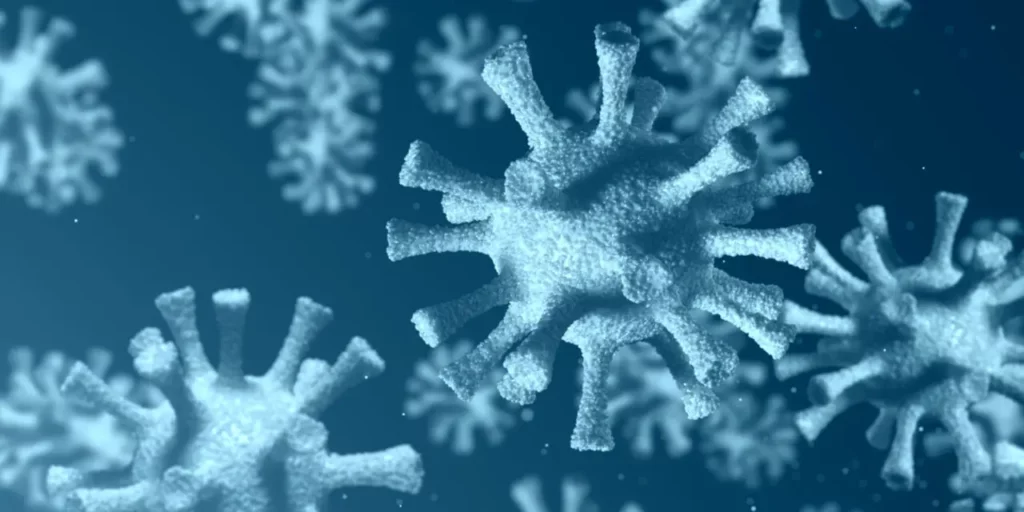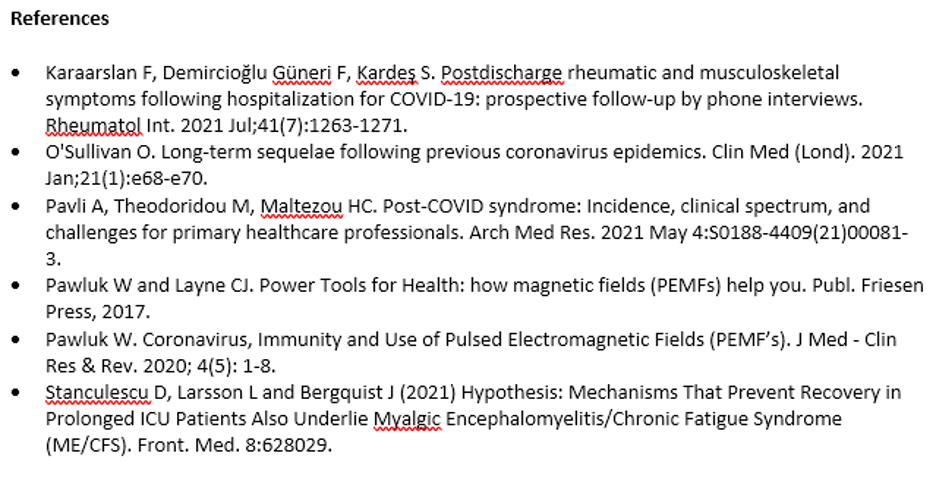Long Hauler Syndrome (LHS)
Table of Contents

The SARS-CoV-2 pandemic of 2019 – 21 is showing signs of waning as of June 2021. By now, worldwide, there have been 182,042,821 cases reported, with 3,942,207 deaths and 166,533,512 people who have recovered. On April 29, 2021, the total daily count amounted to 903,354. (www.worldometers.info/coronavirus).
While the clinical spectrum of those infected ranged from asymptomatic, to mild symptoms, to multiorgan failure and to death, the vast majority of individuals recover, to at least a reasonably functional level. The long-term outcomes of infection are remaining to be defined. But it is becoming clear that a substantial percentage of individuals continue to suffer long after their infections – called Long Hauler Syndrome (LHS). (Pavli)
It is common enough that The University of Cincinnati Medical Center has proposed 5 subtypes of LHS, based on initial symptoms, duration of symptoms, whether there is a quiet period and the timing of onset.
Long-term manifestations of coronavirus infections were seen in previous epidemics of SARS-CoV and MERS-CoV. Both epidemics left survivors with fatigue, persistent shortness of breath, reduced quality of life and significant mental health problems. (O’Sullivan) The difference with this current pandemic is the global extent and the length of time of involvement. So many more people have been affected and since it is lasting significantly longer, with the progressive development of variants, the number of people being left with residual and persistent symptoms has also grown exponentially. And, unfortunately, there are no definitive and effective treatments for LHS.
The pattern of continued and persistent symptoms is called by various names, including Long Hauler Syndrome (LHS) or Post-Covid Syndrome. LHS is estimated to affect 10 – 35% but could reach 85% in those who have been hospitalized. Persistent medical problems have a wide spectrum of symptoms and other manifestations. LHS is most probably a multisystem disease, even following mild acute infection. Causes of these reactions may include hormonal disturbances, immune system dysfunction, persistent subacute or super infections, and nervous system abnormalities
LHS symptoms
The major symptoms of LHS include fatigue, shortness of breath, chest pain, mental and cognitive disorders, and scent and taste dysfunctions.
Chronic fatigue syndrome/myalgic encephalomyelitis
The chronic fatigue looks much like chronic fatigue syndrome/myalgic encephalomyelitis (CFS/ME), can persist up to or beyond 7 months after initial infection, and result in significant disability. LHS resembles other postinfectious syndromes that follow outbreaks of other viruses, and selected symptoms overlap with CFS/ME. It is triggered by infection and immune activation, resulting in a dysregulated autonomic nervous system (dysautonomia) and abnormal immune parameters. (Stanculescu)
Shortness of breath and/or poor exercise tolerance are more common in those who have been hospitalized and last up to 4 months after discharge. Shortness of breath may even occur for the first time even weeks after discharge, affecting between 43 – 66% of those hospitalized or in ICU. Chest pain could still be common in about 22% at 2 months. These problems are probably due to residual lung injury during the acute infection. Pre-existing COPD is more likely to result in more severe lung impairment and may increase the risk for progressive lung fibrosis over time.
Mental health symptoms include posttraumatic stress disorder (PTSD), depression, anxiety and cognitive impairment. There are many factors relating to the process of infection and hospitalization that contribute to the symptoms. Sleeping disorder is, anxiety and depression may affect up to 26%, even up to 6 months following initial SARS-CoV infection. PTSD may range from 6 – 20%. The rate of suicidal ideation is also increased. Psychological issues and sleep problems may also continue to persist and will need attention.
Neurological symptoms and cognitive dysfunction can result from multiple, interactive causes, especially direct damage by the virus to the brain and indirect effects due to the systemic nature of the infection. The psychological issues may have little to do with pre-existing conditions.
Neurological issues have occurred more often in males and include Guillain-Barré syndrome (GBS), often seen with other viral infections and widespread immunization campaigns.
Since SARS CoV2 infections are a neuro-inflammatory disorder, neurological syndromes are being seen more commonly. These include stroke, cerebral vasculitis and hemorrhage, altered mental status (from encephalitis, encephalopathy, seizure, spasticity), peripheral nervous system involvement (GBS, muscle inflammation, and neuropsychiatric symptoms. Opsoclonus-myoclonus syndrome (OMS) can also occur. OMS is rare and affects the nervous system resulting in rapid, multi-directional eye movements (opsoclonus), quick, involuntary muscle jerks (myoclonus), uncoordinated movement ( ataxia ), irritability, and sleep disturbance. Transverse myelitis has also been seen and may result in paralysis. It involves an inflammatory process of the spinal cord that they result in neuronal death or spinal cord lesions.
Taste and smell issues can affect up to 11% of individuals 6 months after hospital discharge. This likely happens due to damage to the nerves of smell in the nose or the front part of the brain. Gastrointestinal symptoms, in particular diarrhea and vomiting may be seen in up to one third of patients 2 months after hospital discharge.
Lung issues are also common and persistent. Long-term pulmonary problems may resolve significantly over the next 2 years, although evidence of previous infections shows that people can still be left with some level of pulmonary function issues. (O’Sullivan) Those with significant changes on their chest x-rays during hospitalization will likely need longer term care and follow-up testing should be done to evaluate the extent of inflammation not only in the lungs but also elsewhere in the body and various organs. These include evaluation for possible heart damage and risk of clotting.
Chronic inflammation and musculoskeletal complaints
In one study (Karaarslan) following up on people who had been hospitalized, it was found that at 1-month after hospitalization, 72.0% reported one or more symptoms, with 56% had musculoskeletal symptoms, 51% had any other SARS-COV-2 symptom. The musculoskeletal symptoms were fatigue/weakness (44%), back pain (23%), joint pains (22%), muscle aches (21%), low back pain (16%), and neck pain (10%).
Another serious postinfectious condition has been found that can occur 2–6 weeks after SARS-CoV-2 infection is a multisystem inflammatory syndrome (MIS). (Brodin) It has been seen in children (MIS-C) and in young adults (MIS-A). Disease severity in SARS-COV-2 correlates with the neutrophil-to-lymphocyte ratio (NLR). NLR is a marker of systemic inflammation. The NLR ratio is indicative of low-grade inflammation, ‘inflammaging’ and obesity-associated inflammation, and is a poor prognostic factor in SARS-COV-2.
LHS prognosis and care
Other than prolonged symptoms, LHS does not seem to have further complications or fatal outcomes. Since there is no “cure” for LHS, management of the problems of those with LHS have to be practical and serve most to help with symptoms. New developing symptoms may indicate further delayed consequences of infection. Those with significant changes on their chest x-rays will likely need longer term care and testing should be done to evaluate the extent of inflammation in the body and various organs. These include evaluation for possible heart damage and risk of clotting.
Role of PEMFs in LHS
Since PEMFs have been shown to have numerous health benefits and impact so many physiological functions they should strongly be considered to help in the management and support of those with LHS. (Pawluk) In particular, appropriate PEMFs will help with inflammation, immune function, circulation, the coagulation system, brain and spinal cord function, pulmonary function, fatigue, sleep, PTSD/anxiety and depression. Daily home use would be expected to help the most with many of the symptoms and should facilitate tissue repair and regeneration. Treatment may be needed for years to achieve optimal and stable results. Fortunately, PEMFs are extraordinarily safe and may be combined with other therapies for best results. PEMFs may reduce or eliminate the need for pharmaceutical anti-inflammatory treatments.
The right intensity PEMF, whole body PEMF with local applicator/s is necessary to achieve optimal results, in both the short-term and long-term See here.
To determine which PEMF system would be best for your circumstances, a consultation is recommended. Apply here.
